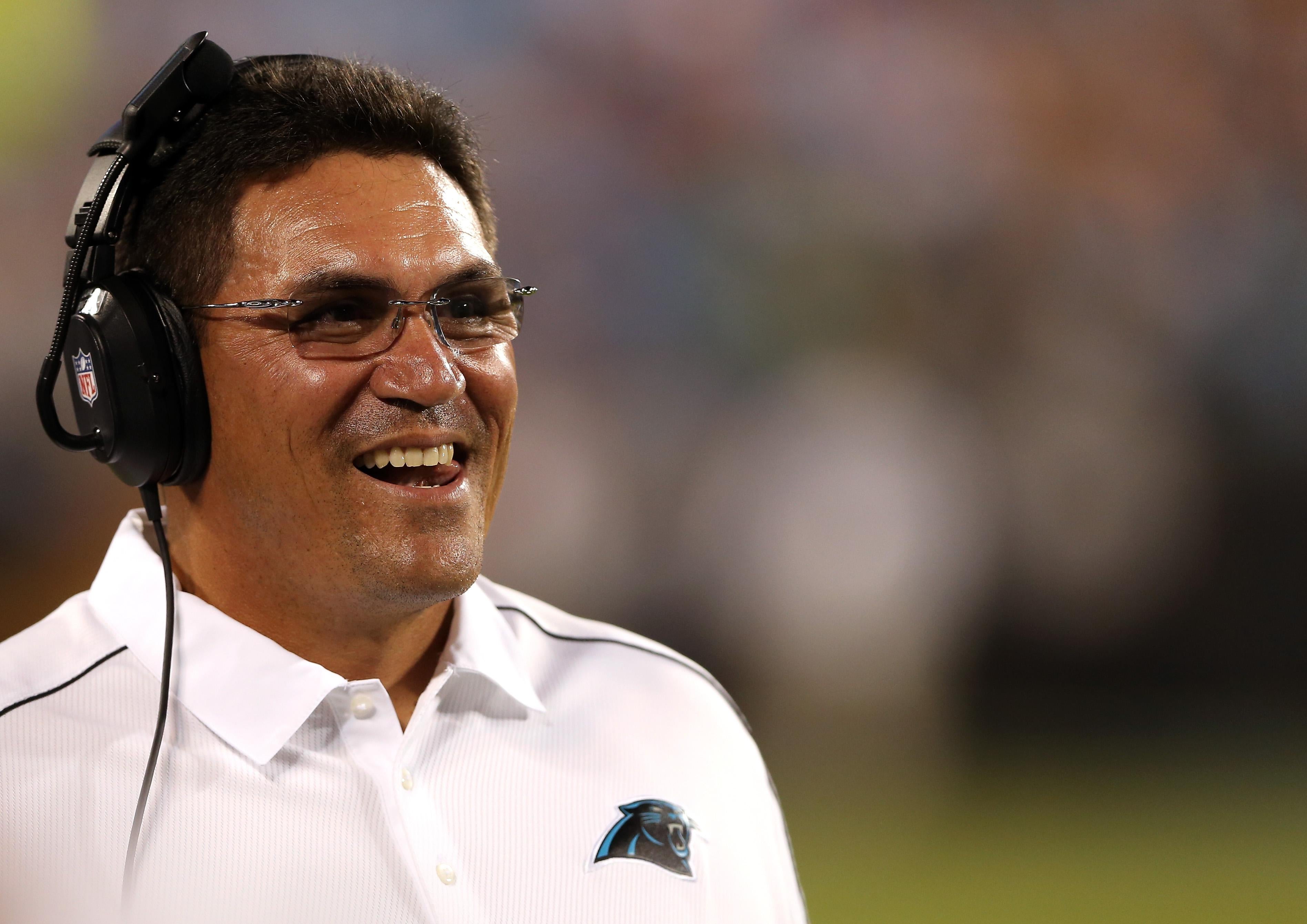It seems that just about everyone in the country knew that the Panthers should go for it on fourth down except for the one man who counted: Carolina coach Ron Rivera. My own analysis agrees with that of Aaron Schatz and others, that the Panthers would have needed about a 35 percent chance at conversion to make a fourth-down attempt worthwhile.
Many teams employ analytics experts to help them prepare for decisions like that, and NFL coaching staffs are buying into stats like these more every day. But when the pressure is on, coaches don’t think rationally. And even when they stumble into making the right decision, they don’t seem able to explain their thinking except in vague terms. (See Smith, Mike—fourth down in overtime, 2011.)
Why does this happen? One common argument is that coaches are afraid to lose their jobs, and so they revert to conventional wisdom as a way to cover their asses. But I think two common fallacies provide a better explanation for what’s going on here.
The first fallacy is called base rate neglect. This is an error all people tend to make, even experts. The most common example is when doctors are asked to estimate the chances of someone having a disease given certain facts. They almost universally ignore the base rate of the disease—that, say, only one in 100,000 people in the population will ever contract it.
Similarly, when coaches are asked in postgame press conferences about fourth-down decisions, they discuss only the particulars of the situation: how successful they were on the two short-yardage plays earlier in the game, the nagging injury to the left guard, and the success his defense has had so far that day. What they always ignore is the base rate of success. But it’s the most important piece of information. It’s the one thing you’d want to know as a head coach in such a situation. All that other stuff affects the equation at the margins, but unless you know the base rate they’re practically useless. That’s the analysis I provide—the base rates that show how often teams succeed on fourth down, and the effect on your win probability if you go for it.
Given how coaches talk, you would think that the situational particulars almost always discourage going for it. That’s where the second fallacy comes into play, something called prospect theory. Prospect theory simply observes that we are about twice as upset to lose something as we would be happy to gain the same thing. If you misplace a $20 bill, you’ll be twice as pissed at yourself as you would be glad to find a twenty on the sidewalk. Experiments show that this is a universal human tendency.
This kind of thinking made a lot more sense to our caveman ancestors. It was never a good gamble to risk losing one woolly mammoth for the chance to get a second. The second would be a rotting mess before the next meal.
It’s a lot less logical in the NFL. Coaches see failing on fourth down as losing the $20 bill and succeeding on fourth down as finding one. They look at that single decision in isolation from the larger game, magnifying the relative consequences of failure before they make their decision. Fans and other observers—at least the logical ones—don’t feel the same effect because we’re not the ones directly confronted with the consequences. (The same phenomenon has been observed in golf, where risk-averse pros putt to avoid bogeys rather than to gain strokes by making birdies.)
I don’t think Ron Rivera was trying to preserve his job by punting. The best way for him to keep his job is to win, and that means following the numbers. Head coaches aren’t cowards. They’re humans, and risk aversion is something we’re all guilty of—we are the head coaches of our own lives, and we’re punting all day long. Whether it’s moving to the new city for that job you always wanted, starting your own business, or deciding what to order at a restaurant, we’re all more afraid than we should be of doing the wrong thing.
